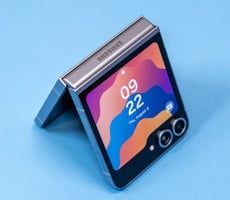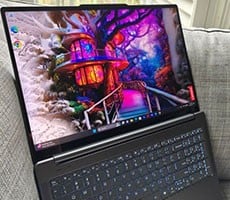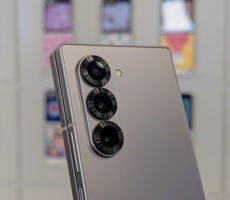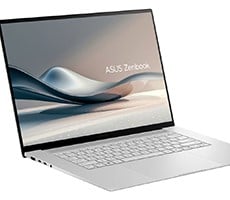Samsung Galaxy Z Flip 6 Review: Refined Evolution Not Revolution
Samsung Galaxy Z Flip 6 Voice And Data
We've been testing this phone on T-Mobile's "Ultra Capacity" 5G network, which operates in the mid-band spectrum. The phone does an excellent job of holding onto a signal, and speeds are right where we'd expect—several hundred megabits down and a much smaller number up.Voice calls sound good on the Galaxy Z Flip 6. Call audio is crisp, and the other parties report no trouble understanding on their end. Its speakerphone is good, too, and the form factor allows you to answer calls from the outside display, so you might use this feature more than on other phones.
Samsung Galaxy Z Flip 6 Performance
Like its big brother, the Galaxy Z Flip 6 has Qualcomm's latest flagship Arm chip, the Snapdragon 8 Gen 3. It's a 4nm eight-core processor with the Cortex X4 CPU at the helm, clocked an 3.3GHz. The remaining cores are spread across three islands with three A720 CPUs at 3.15GHz, two A720s at 2.96GHz, and a pair of slower A520 cores at 2.27GHz. It features an Adreno 750 GPU, which is the most capable you'll find in an Android smartphone. However, it gets very toasty in the Galaxy Z Flip 6. This phone is blazing fast but also blazing hot in spite of the new vapor chamber cooling setup.Samsung did increase the RAM this year to 12GB, the same as the more expensive Z Fold 6. That's really the least it can do given the price hike. The phone should be able to keep more apps active in the background, and we have noticed some heavier games and apps opening after the better part of a day without needing to reload.
Samsung Galaxy Z Flip 6 Geekbench Results
Geekbench is a cross-platform benchmark that simulates real-world processing workloads in image processing and particle physics calculation scenarios. We tested all of the smartphones featured here with Geekbench's single and multi-core workloads.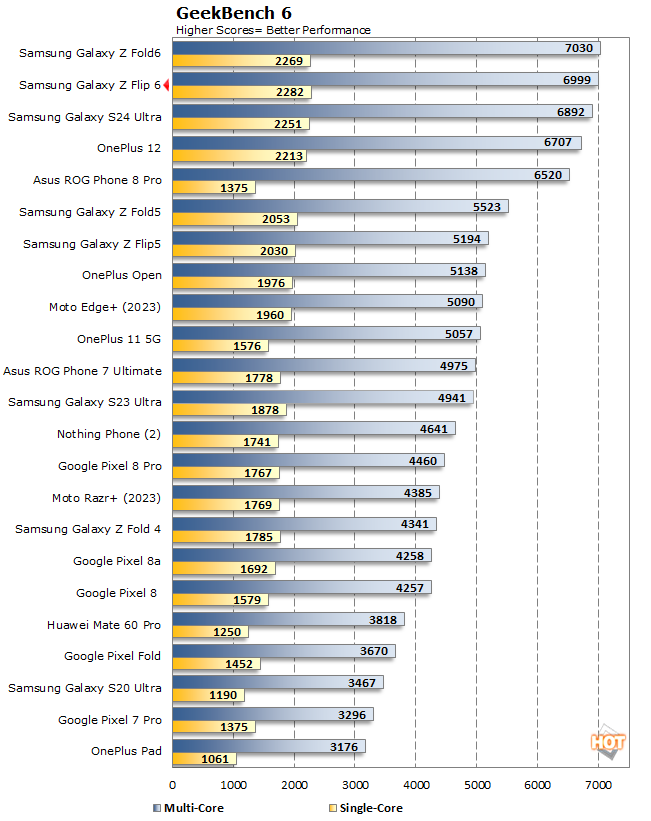
Recently, the Geekbench test has been upgraded to version 6, which has new ways of testing multi-core configurations and uses higher-resolution diagnostic assets. The Galaxy Z Flip 6 puts up one of the highest scores we've seen, thanks to the flagship Snapdragon chip inside. Only the Z Fold 6 scored higher, and the difference is minor.
Samsung Galaxy Z Flip 6 PCMark For Android Results
UL's PCMark for Android is an excellent suite of tests if you want to benchmark a wide range of tasks on a handset -- things like image and video editing, as well as lighter-duty, everyday workloads such as email and web browsing. When you see the test running live, it's clear the scripted application tests are carefully selected and tuned to make use of the mobile platform in a very controlled way.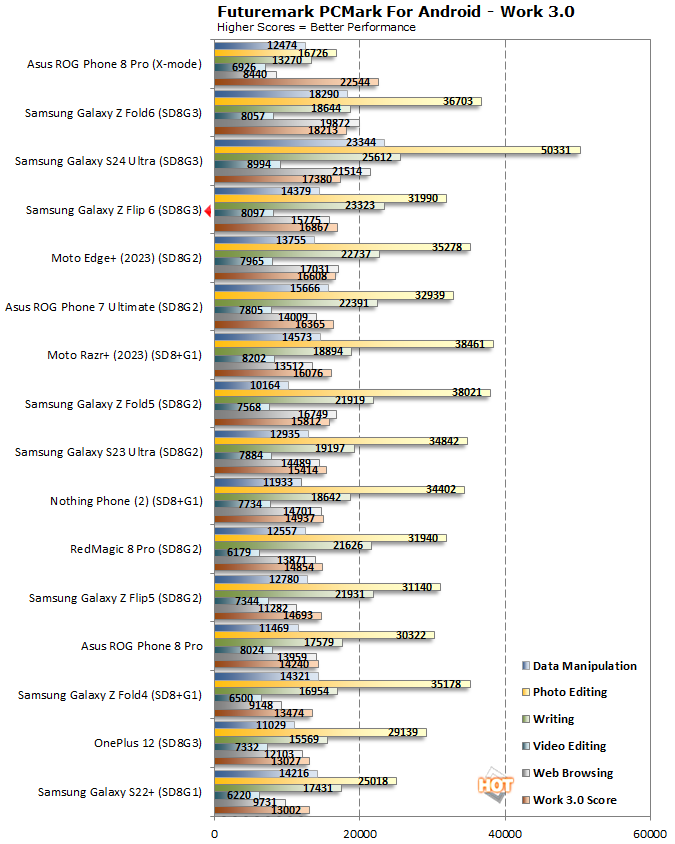
Again, the Z Flip 6 is one of the fastest phones in this benchmark. Other 2024 Samsung phones are up near the top, along with the Asus ROG Phone Pro 8, but that phone only manages the top spot in its overcocked "X-mode."
Samsung Galaxy Z Flip 6 AnTuTu Benchmarks
AnTuTu’s benchmark returns a number of metrics ranked with somewhat nebulous scores, rather than frame rates or time to complete. Here, we're running the latest version of AnTuTu across multiple Android devices. AnTuTu offers four top level performance results which are all included here: CPU, RAM, 3D, UX (or User Experience), along with a total score.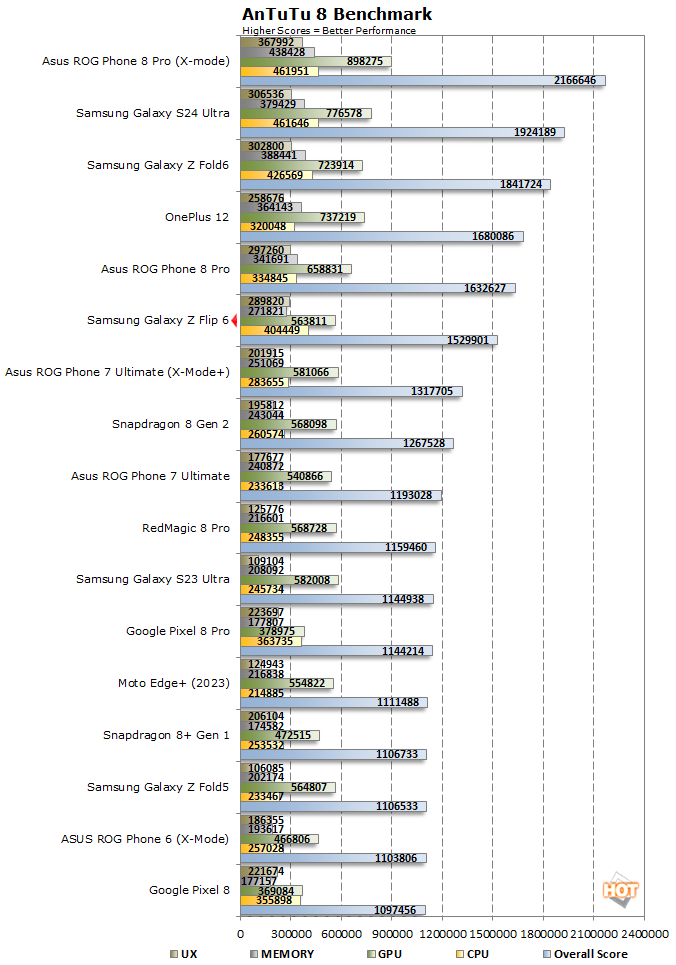
In AnTuTu, the Flip 6 falls back from the leaders just a bit, but it's still one of the faster devices we've run through this benchmark.
Samsung Galaxy Z Flip 6 Graphics And Gaming Benchmarks Results
Now, let's take a look at how the Pixel 8a stacks up in GFXBench, which has been one of the standard mobile graphics/gaming performance benchmarks for years. To ensure that display refresh (v-sync) and resolution aren't limiting factors, we're comparing off-screen test results here. GFXBench tests OpenGL ES graphics workloads and we're specifically testing OpenGL ES 2.0 and 3.0, as well as Vulkan in the latest iterations.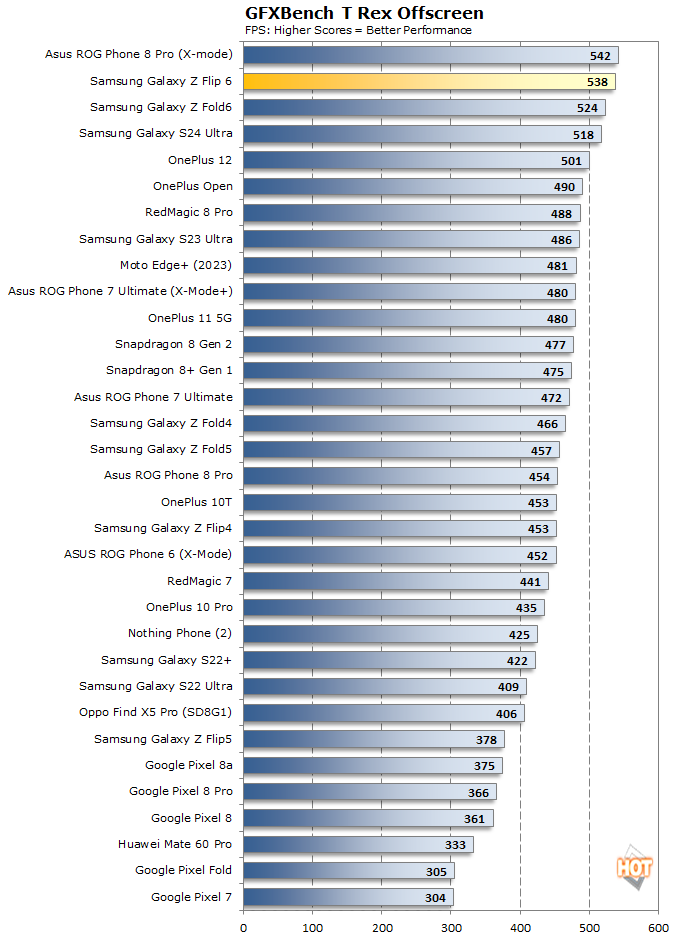
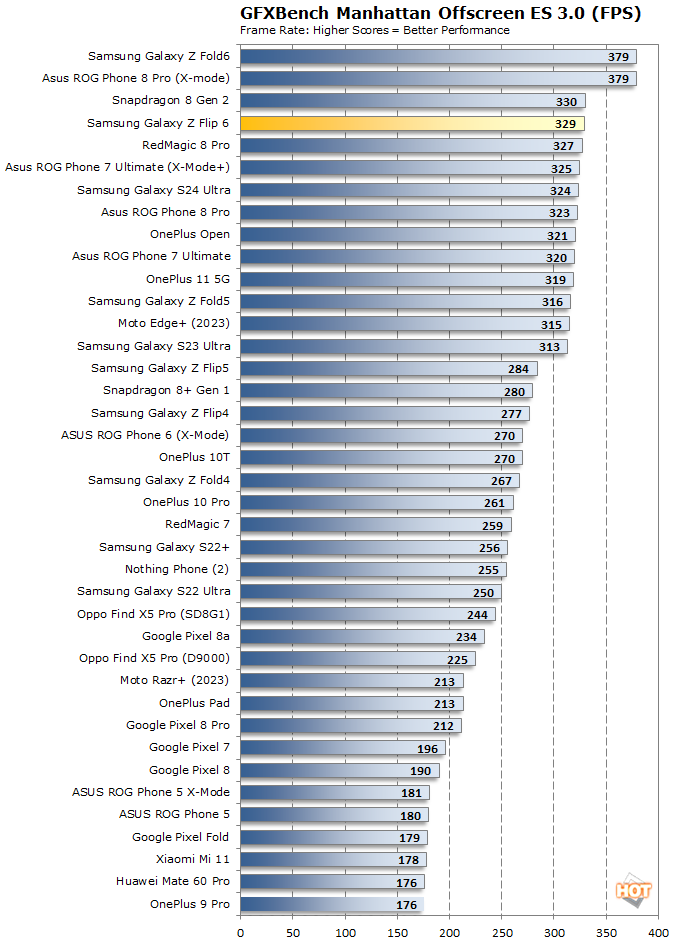
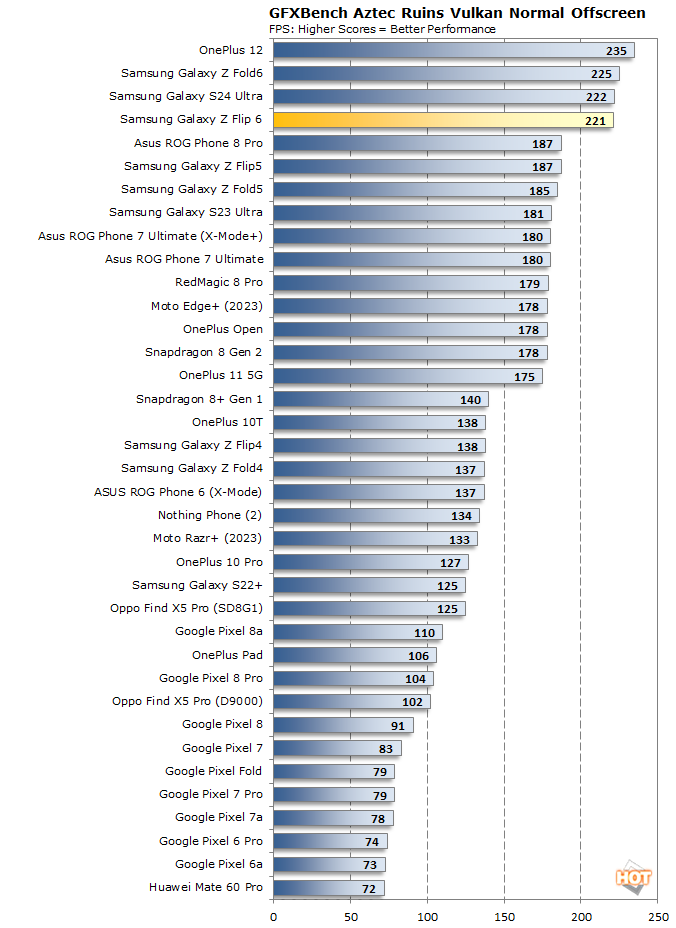
The Galaxy Z Flip 6 is among the fastest phones in all three of our usual GFXBench tests. The only phones that get anywhere close to the Flip 6 are other devices with the Snapdragon 8 Gen 3 chip. There's a noticeable jump in performance compared to last year's Snapdragon flagship. Although, the Flip 6 did score a bit low in the Manhattan ES 3.0 test, falling in line with Snapdragon 8 Gen 2 chips.
Samsung Galaxy Z Flip 6 3DMark Slingshot Tests
UL's 3DMark Sling Shot is one of several modules in the 3DMark mobile suite. Unlike previous gen 3DMark mobile tests, Sling Shot is a much more advanced OpenGL ES 3.1 and Metal API-based benchmark that employs more advanced rendering techniques, like volumetric lighting, particle illumination, multiple render targets, instanced rendering, uniform buffers, and transform feedback. We're running this test in off-screen mode once again to remove display resolution differences from the equation. This allows us to compare cross-platform results more reliably.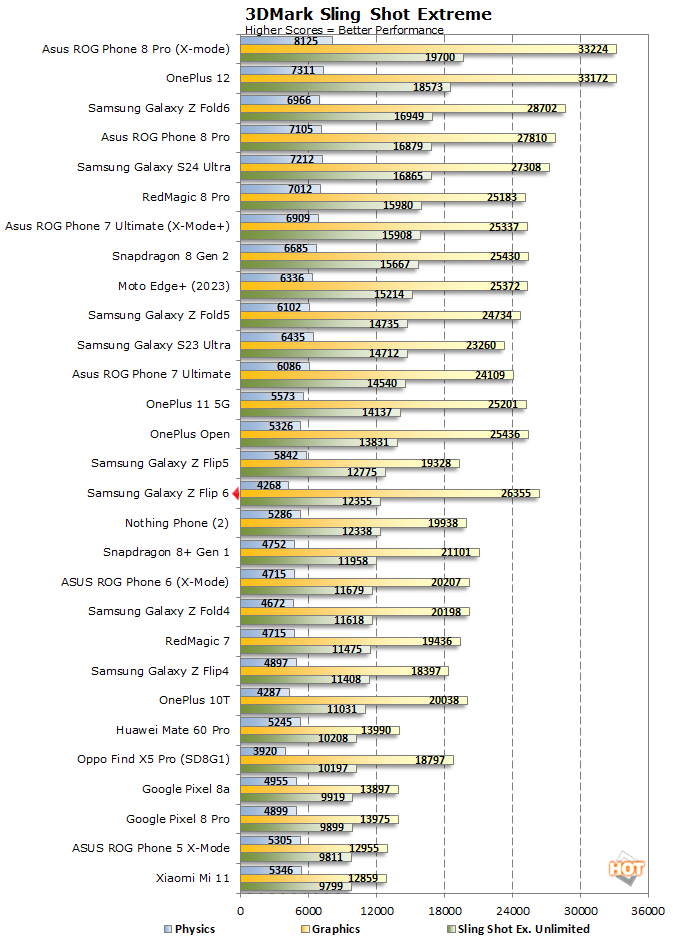
Samsung's new flip phone falls behind in the Slingshot test. Interestingly, its graphics score is right where we'd expect it to be, but the physics score is low. As a result, the total score is on the low side, just slightly behind last year's Z Flip. We ran this test a few times to verify. We believe this is due to heat build-up during the test. 3DMark runs the physics test last, by which time the Z Flip 6 was very toasty.
Samsung Galaxy Z Flip 6 Wild Life Benchmark Tests
3DMark's Wild Life benchmark is newer and more demanding than Slingshot, and it allows powerful devices to shine.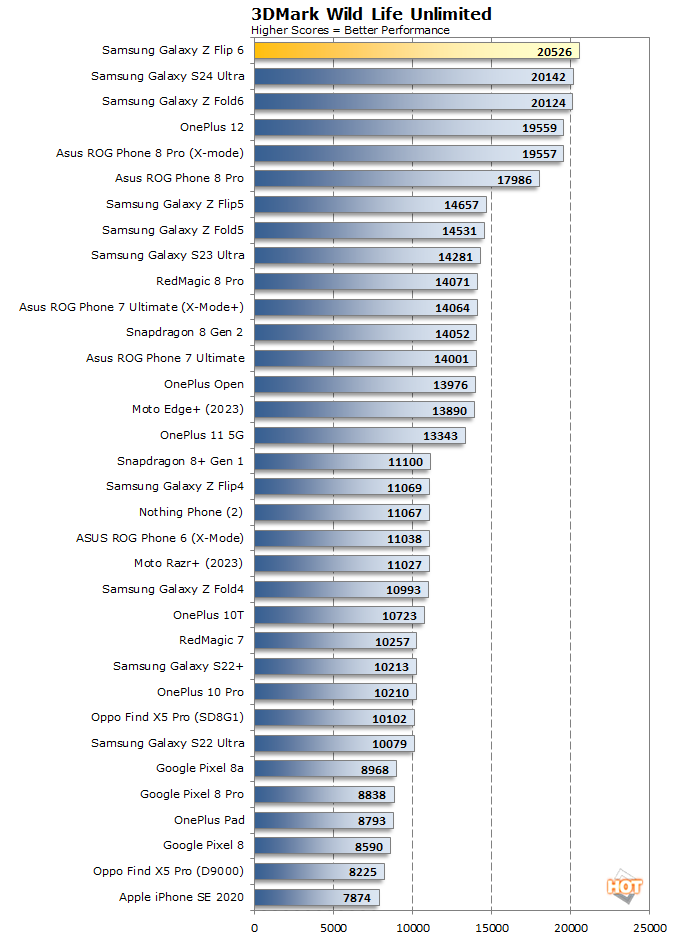
3DMark's Wild Life test is a return to form for the Z Flip 6, which hits the highest score we've seen in this demanding test. However, the phone's speed won't last long if you keep the GPU cranked up.
The Wild Life stress test runs the above benchmark 20 times, tracking how a device slows down as it heats up. Most phones lose some speed as they approach their thermal limit, but the severity of the slowdown varies dramatically from one phone to the next.
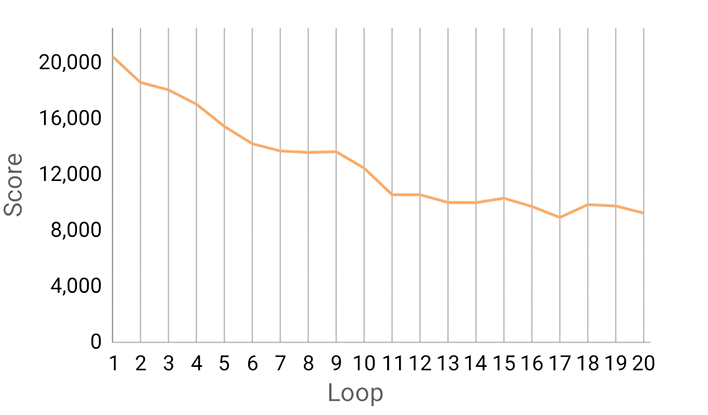
The Galaxy Z Flip 6 takes a big performance hit as it heats up. The phone loses more than half of its graphical performance over the course of this test, or about 57%. That's a lot, and the Galaxy Z Fold 6 isn't affected as significantly by thermal saturation.


